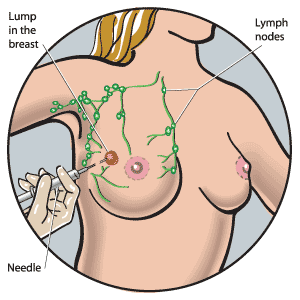More than one third of Texas women still receive unnecessary breast biopsy surgery
Many women in Texas who are found to have an abnormality on routine mammogram or discover a lump in one of their breasts end up having an old-fashioned surgical biopsy to find out whether the breast abnormality is malignant. Since 2001, national expert panels have recommended that the first course of action for women with breast lumps or masses should be minimally invasive biopsy.
Minimally invasive biopsies are most commonly done under ultrasonographic or X-ray guidance, with either a fine needle or preferably a “core tissue extraction” needle. They do not require surgery or anesthesia and leave little to no scarring. Most importantly, a diagnosis of benign (non-cancerous) or malignant (cancerous) breast mass can be determined before any decisions about treatment are made.
In spite of these benefits, new research from the University of Texas Medical Branch published in the Journal of the American College of Surgeons shows that expensive, invasive surgical breast biopsies remained the first diagnostic step for 35 percent of women diagnosed with a breast mass between 2000 and 2008 in Texas. The investigators performed an exhaustive analysis of Texas Medicare data from 2000 to 2008, including more than 87,000 breast biopsies.
The traditional method of removing the mass through surgery to obtain a definitive diagnosis has a number of negative consequences. If the mass is benign, then the woman had surgery unnecessarily; in fact, only 40 percent of the women studied ended up having breast malignancies. Simply put, thousands of women throughout Texas underwent surgery just to find out they did not have cancer.
On the other hand, if the mass is malignant, more surgery will probably be required to remove more tissue, so the patient will end up having to have multiple surgeries instead of only one. Surgery is far more expensive than needle biopsy, so for the Medicare patients in this study who underwent biopsy surgery, the government had to pay a much steeper tab.
“There is no benefit to the patient in having an expensive, invasive surgical procedure instead of a needle biopsy,” said senior author Dr. Taylor Riall, UTMB associate professor of surgery and a lead investigator for the study. “We need to get the word out to women across the state that surgery is not the procedure of choice for definitive diagnosis of a breast mass.”

The American Society of Breast Surgeons, the American College of Radiology and the National Cancer Center Network have all endorsed minimally invasive breast biopsy as providing results that are as accurate as surgical biopsies.
“At UTMB, minimally invasive biopsies are our diagnostic procedure of choice. We do them more than 98 percent of the time,” said Riall.
The National Cancer Center Network is trying to find out what barriers stand in the way of reaching a 90 percent rate of minimally invasive breast biopsies nationwide. The study is a step in providing crucial information that will help in the national effort.
This research, which was supported by the Comparative Effectiveness Research on Cancer in Texas research project, also examined the time trends, racial/ethnic variation and geographic variation in the use of biopsy techniques. It is the most detailed study of breast biopsy patterns undertaken in the United States and was funded by the National Institutes of Health and the Cancer Prevention Research Institute of Texas.
Co-authors are Christopher Zimmermann, Kristin Sheffield, Dr. Casey Duncan, Yimei Han, Catherine Cooksley and Dr. Courtney Townsend.
###
The University of Texas Medical Branch